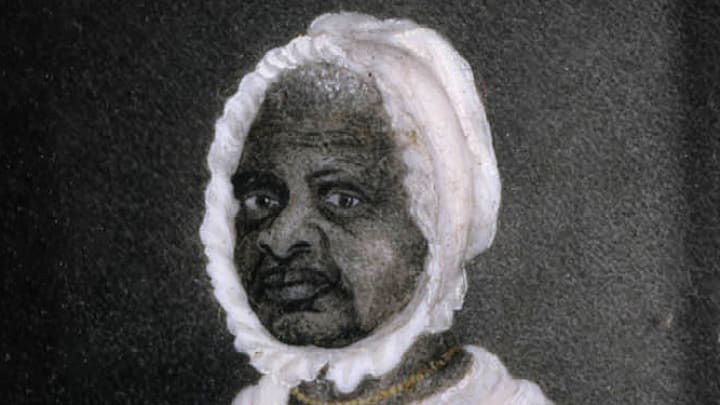At a time of immense change in the United States, Elizabeth Freeman served as a beacon of hope for enslaved people everywhere when she changed the course of history in Massachusetts.
The Case for Freedom
It’s hard to nail down the precise details of Freeman’s life—much of what we know about her was written down by people close to her or later historians, but not recorded by Freeman herself. Known as “Mum Bett,” Freeman was, depending on the source, either born into slavery in the 1740s or sold into it at just 6 months old. She was later given to the Ashley family of Sheffield, Massachusetts. Freeman had no rights as an enslaved person and lived a life of hard domestic labor in the Ashley home, where she looked after the family’s children and took care of housekeeping and gardening responsibilities.
The Ashleys were not kind to Freeman. At one point, Hannah Ashley became angry at Freeman’s sister and moved to strike her with a hot coal shovel (some sources claim Freeman’s daughter, not sister, was the intended target). Freeman intervened and was hit instead, an act that left a large burn on her arm. She wore the scar publicly for the rest of her life as a testament to the cruelty she faced.
Freeman soon saw a way out of her situation. In 1780, the Constitution of the Commonwealth of Massachusetts was officially adopted, and with it came a new possibility for enslaved people in the commonwealth to take back their freedom. In addition to emphasizing the separation of powers into three distinct branches (executive, legislative, and judicial), the constitution also asserted individual rights and liberties, including the declaration that “all men are born free and equal.”

Upon hearing this statement cried out in the town center, Freeman became angry at the hypocrisy of her enslavement as the town cheered for their new constitution. The next day, she went to the home of a local lawyer named Theodore Sedgwick and demanded justice for herself, saying, “I heard that paper read yesterday, that says all men are born equal and that every man has a right to freedom. I am not a dumb critter; won’t the law give me my freedom?”
Freeman told Sedgwick that she wanted to sue the Commonwealth of Massachusetts for her freedom. The young lawyer agreed to represent her.
The Trial That Led to Freedom
Not long after Freeman made it clear she was suing Massachusetts, a man enslaved by the Ashleys joined her cause. Sedgwick brought the case, Brom and Bett v. Ashley, to the Berkshire Court of Common Pleas in May 1781. By this time, there had been about 30 suits led by enslaved people attempting to gain their freedom due to technicalities in the established system. Unlike those cases, Sedgwick argued in Brom and Bett v. Ashley that the new Massachusetts Constitution prohibited slavery and Mum Bett (Freeman) and Brom were not Ashley’s property. It was considered a pivotal “test case” for the document. Sedgwick obtained a court order (writ of replevin) directing John Ashley to release Freeman and Brom, but he refused.
By August 1781, their case moved to the County Court of Common Pleas of Great Barrington. There, Sedgwick successfully argued that the Massachusetts Constitution banned slavery. On August 22, 1781, the jury declared Freeman and Brom free.
After being granted her freedom, Mum Bett changed her name to the one we know now: Elizabeth Freeman. She later found employment as a paid worker for the Sedgwick household and became a prominent midwife in the community. At the time of her death in 1829, she counted a home, 20 acres of land, and some money among her possessions. Hundreds of people came to her funeral to pay their respects.
Read More About Black History Here:
A version of this story originally ran in 2024; it has been updated for 2025.
